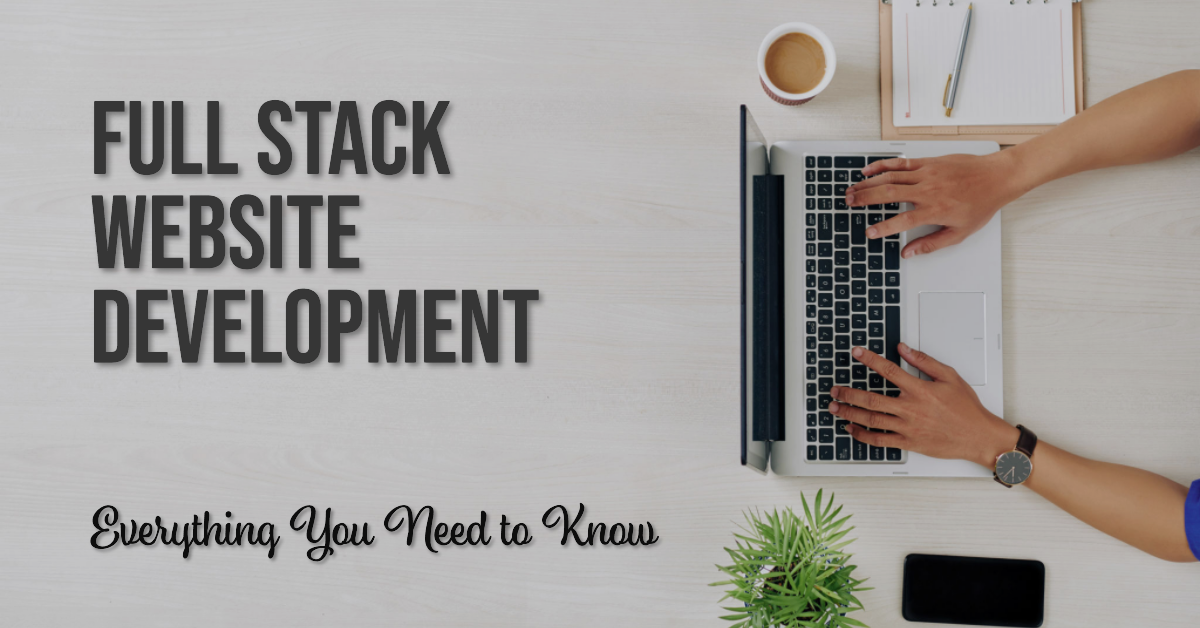Full Stack Website Development: Everything You Need to Know
If you are looking to create a website or application, you have probably heard the term “Full Stack” being thrown around. Full Stack development is the process of creating both the front-end and back-end of a website or application. This article will provide you with everything you need to know about Full Stack website development, from the basics to the tools you need to get started.

What is Full Stack Development?
Full Stack development refers to the development of both the front-end and back-end of a website or application. The front-end is the part of the website that the user sees and interacts with, while the back-end is the part of the website that runs behind the scenes and handles data storage and processing.
What are the Skills Required for Full Stack Development?
Full Stack developers need to have a wide range of skills, including proficiency in programming languages such as HTML, CSS, JavaScript, and a server-side language like PHP, Python, or Ruby. They should also be familiar with frameworks and libraries such as Angular, React, Node.js, and Express.js.
Other skills that Full Stack developers need to have include database management, version control, and web security.
What are the Advantages of Full Stack Development?
Full Stack development has several advantages. Firstly, it allows for greater efficiency since one developer can handle both the front-end and back-end development. Secondly, it provides greater flexibility, as developers can switch between the front-end and back-end as needed. Finally, Full Stack development can result in a better user experience since developers have a better understanding of the entire website or application.
What are the Tools Needed for Full Stack Development?
To get started with Full Stack development, you will need several tools. Firstly, you will need a text editor, such as Sublime Text, Atom, or Visual Studio Code. You will also need a web browser, such as Google Chrome, Firefox, or Safari. Additionally, you will need a version control system, such as Git, and a hosting provider, such as Amazon Web Services or Google Cloud Platform.
What is the Full Stack Development Process?
The Full Stack development process can be broken down into several stages. The first stage is planning, where you define the scope and requirements of the project. The second stage is design, where you create wireframes and mockups of the website or application. The third stage is development, where you write the code for the front-end and back-end. The fourth stage is testing, where you test the website or application for bugs and errors. Finally, the fifth stage is deployment, where you launch the website or application.
What are the Best Practices for Full Stack Development?
To ensure success in Full Stack development, it is important to follow best practices. Firstly, you should use version control to keep track of changes and collaborate with other developers. Secondly, you should write clean, organized code that is easy to understand and maintain. Thirdly, you should regularly test your website or application to ensure that it is functioning properly. Finally, you should prioritize security to protect user data and prevent attacks.
What are Some Full Stack Development Frameworks?
There are several Full Stack development frameworks available, including:
- Ruby on Rails: a popular framework for creating web applications using the Ruby programming language.
- MEAN stack: a collection of JavaScript-based technologies, including MongoDB, Express.js, AngularJS, and Node.js.
- Django: a Python-based framework for building web applications.
- Laravel: a PHP-based framework for developing web applications.
- Flask: a Python-based microframework for building web applications.
How to Get Started with Full Stack Development?
To get started with Full Stack development, you should first choose a programming language and framework to learn. Then, you can start by learning the basics of HTML, CSS, and JavaScript. Once you have a good understanding of these languages, you can move on to learning a server-side language such as PHP, Python, or Ruby.
There are several online resources available for learning Full Stack development, including online courses, tutorials, and books. Some popular online learning platforms for Full Stack development include Udemy, Coursera, and Codecademy.
What are Some Common Full Stack Development Challenges?
Full Stack development comes with its fair share of challenges. One common challenge is keeping up with new technologies and trends, as Full Stack development is a rapidly evolving field. Another challenge is ensuring that the website or application is optimized for performance and speed, particularly for larger websites or applications.
Finally, Full Stack development can be complex, requiring knowledge of multiple programming languages, frameworks, and technologies. However, with practice and dedication, it is possible to become proficient in Full Stack development.
Conclusion
Full Stack website development is a crucial part of creating modern websites and applications. It involves developing both the front-end and back-end of a website or application, requiring a wide range of skills and knowledge. By following best practices and using the right tools, it is possible to create high-quality, efficient, and secure websites and applications that meet the needs of users and businesses alike.
FAQs
- What is Full Stack development? Full Stack development is the process of creating both the front-end and back-end of a website or application.
- What are the skills required for Full Stack development? Full Stack developers need to have proficiency in programming languages such as HTML, CSS, JavaScript, and a server-side language like PHP, Python, or Ruby.
- What are the advantages of Full Stack development? Full Stack development allows for greater efficiency, flexibility, and a better user experience.
- What are some Full Stack development frameworks? Some popular Full Stack development frameworks include Ruby on Rails, MEAN stack, Django, Laravel, and Flask.
- How can I get started with Full Stack development? You can get started with Full Stack development by choosing a programming language and framework to learn, and then by learning the basics of HTML, CSS, and JavaScript.
